US election: Campaign drama and a knife-edge election leave free world in the grip of unprecedented states of suspense
History also shows that Donald Trump is much better at losing elections than he is at winning them, but he is strutting like a victor as Kamala Harris suffers a stall in her momentum.
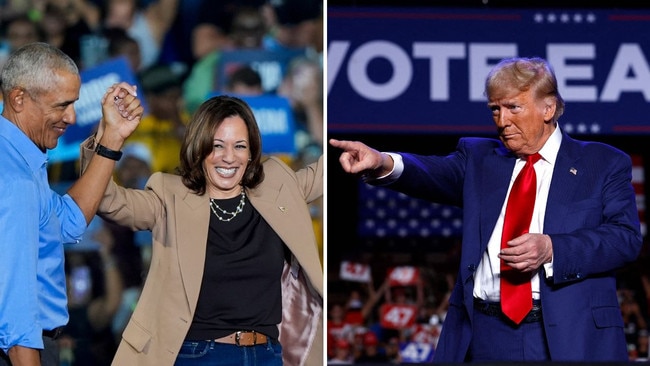
It’s been more than 60 years since a US presidential election campaign has been this close for this long. Not just close, but nailbiting, sweat-inducing, agonisingly close.
We have watched, slack-jawed, at events we never could have imagined – from the eleventh hour replacement of a geriatric sitting President as the candidate, to two attempted assassinations complete with a bloodied ear and a defiant first pump, to the sudden elevation of a black woman to challenge a newly convicted felon.
Yet despite this unprecedented drama, Americans are still waiting for a decisive breakout moment that might deliver victory to Donald Trump or Kamala Harris.
With less than two weeks to go, the odds are growing that there will not be any such breakout event and that this election could be as close as the polls predict, a “hanging chads” repeat of the 2000 election, where a mere handful of votes will determine the next occupant of the White House. Yet, that is not the optics we are seeing on the campaign trail at the moment. Trump, who has been ever-so-slowly clawing back the narrow poll lead Harris once enjoyed, is strutting America like a winner. He is confident, unscripted and maverick, running a campaign that veers from the bizarre – like dancing to music for 40 minutes during a town-hall meeting – to the rambling, with his overlong rallies and his refusal to heed his advisers’ pleas for more discipline and focus. But he is hogging the spotlight and dominating the headlines. In this, his third presidential campaign, Trump seems determined to win or lose in his own manner.
By contrast, Harris and her advisers are looking more pensive as the polls have tightened. Gone is the joyous, smiling Kamala who once floated on “the vibe”. She has been replaced by “attack dog” Kamala, biting back at hostile Fox News anchors and others as she crisscrosses the country to sound dire warnings about the future of America’s democracy if her “unfit” and “unstable” 78-year-old opponent should win.
And yet the contrasting images of the two campaigns are hardly justified by the polls which still say that Harris is just as likely to win the November 5 election as Trump. The astonishing thing about this election is that every poll in each of the seven key swing states – Pennsylvania, Michigan, Wisconsin, Arizona, Nevada, Georgia and North Carolina – is within the margin of error and has been ever since Harris took over from Joe Biden as the Democratic candidate in July.

Polling averages in the three critical “Blue Wall” states of Michigan, Pennsylvania and Wisconsin, which delivered the White House to Biden, show the margins between Harris and Trump at less than a point right now.
At the national level, neither candidate has led by five points or more at any point in the race, the first time this has happened in more than six decades.
Harris leads Trump by less than 1 per cent nationally in the Real Clear Politics poll average, and by close to 2 per cent at the 538 polling site, but the poll averages in the battleground states are even closer.
The tightness of the race has not stopped self-proclaimed experts from assuming a Nostradamus-like wisdom about what the polls really mean and what will happen on November 5.
Trump polls factor
For the Trump camp, the greatest hope is that history repeats itself and that the polls once again underestimate the strength of his vote, delivering him victory.
This famously occurred in Trump’s 2016 triumph over Hillary Clinton, when many polls on election day suggested he had close to a 90 per cent chance of losing.
Four years later, in 2020, pollsters claimed they had fixed these faults to account for the distortion caused by the so-called quiet Trump voters who didn’t show up in regular polling. And yet the polls in 2020 also underestimated the Trump vote, that time by an average of 3.5 percentage points.
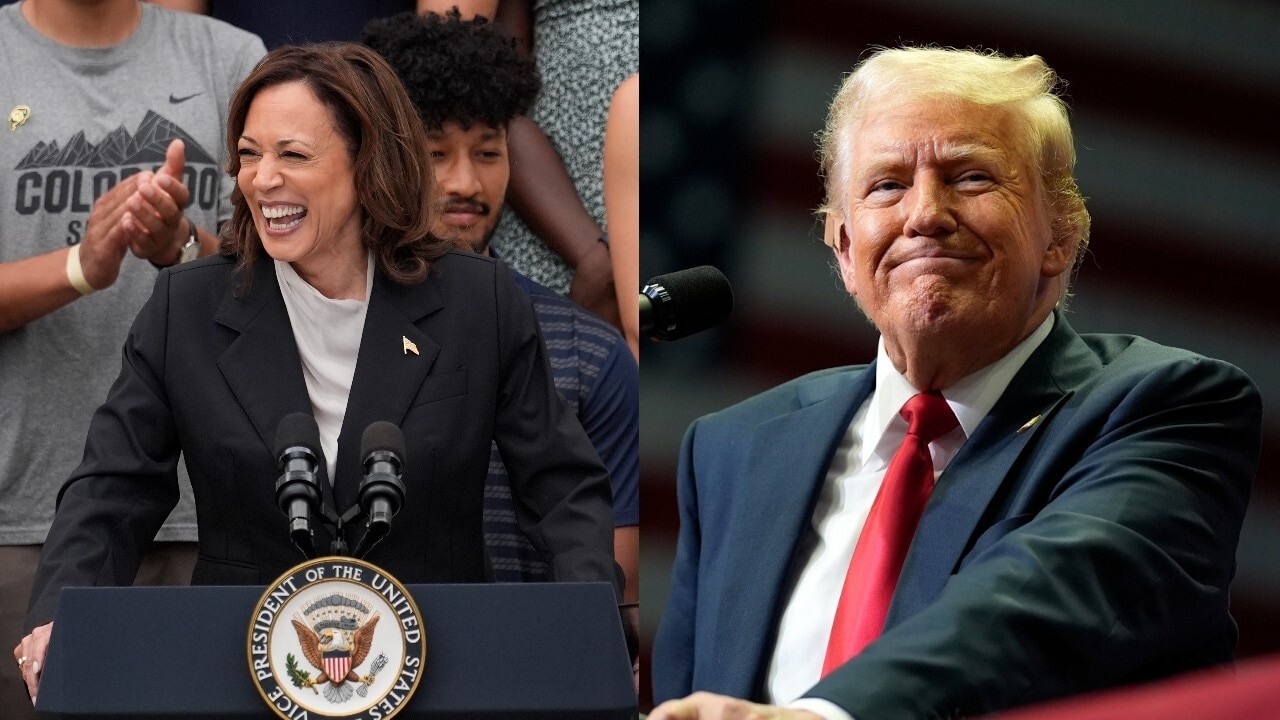
This year the pollsters, like the boy who cried wolf, are once again making the claim that today’s polls are more reliable than in both 2016 and 2020. Yet if a similar margin of error were to occur in this election as it did in either of those elections then Trump would win.
However this theory is a little undermined by the most recent major American poll – the 2022 midterm elections – where the polls heavily over-predicted the Republican vote. In that contest, the forecast “red wave” never arrived as the Democrats retained their Senate majority and only narrowly lost the House. But of course Trump himself was not on that 2022 ballot.
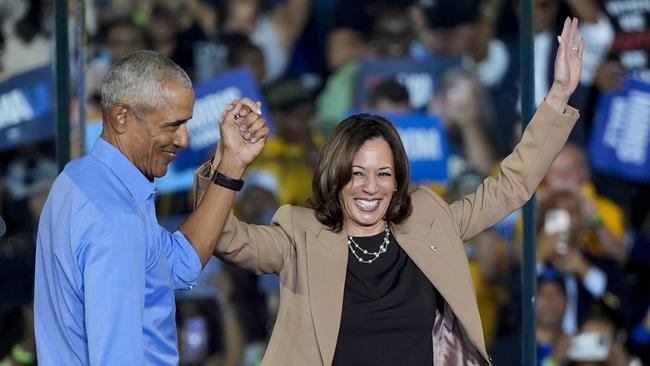
Historical precedents
Yet Trump does have some important history on his side.
No incumbent’s party has ever won another term when the sitting President’s approval rating was this low. Biden’s approval rating is currently underwater at just below 40 per cent and Harris, as Vice President, has struggled to distance herself from his unpopular record.
Also, no incumbent’s party has ever won another term when so many people – about two-thirds of voters in most polls – think the country is heading in the wrong direction. Add to this the fact that no woman, let alone a black woman, has ever won the presidency, and you can see why there is quiet confidence in the Trump camp. In addition, polls consistently show that cost of living and border security are the two issues that concern voters the most. On these key issues, voters clearly nominate Trump, rather than Harris, as the candidate most likely to tackle them best.
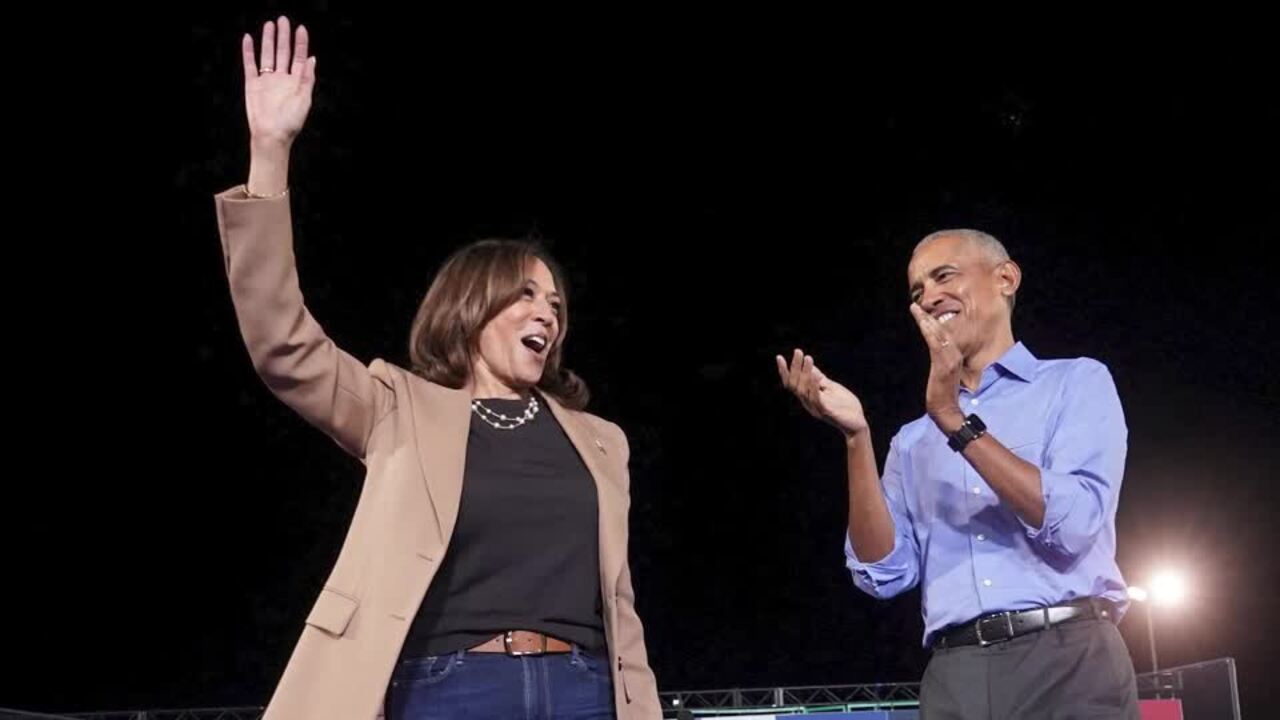
A new Reuter/Ipsos poll this week found Trump leads Harris on the economy by a comfortable 46 to 38 per cent and on immigration by a whopping 48 to 35 per cent.
But the Harris camp can also take some comfort in history.
Polls show that no presidential candidate has ever been less liked than Trump during all three of his campaigns in 2016, 2020 and 2024. Trump’s red meat Make America Great Again fan base is deeply loyal and enthusiastic but the former president has struggled to win back the middle-of-the-road voters who sided with him in 2016 only to desert him in 2020.
Trump cannot win without Middle America returning to him. Although there is no obvious sign that his felony conviction and the string of legal trials that lie ahead of him have caused a voter backlash, they have made it harder, not easier, to win back the middle ground of American politics.

History also shows that Trump is much better at losing elections than he is at winning them. Ever since his 2016 victory – now eight years ago – Trump has lost every important election he has been involved with from the 2018 midterm elections to the 2020 presidential election to the 2022 midterm elections where almost every Trump-backed candidate flopped.
Push for undecideds
As the race enters its final stretch, Trump and Harris are reaching out beyond their traditional supporter bases to try to tap the less than 10 per cent of voters who are either undecided or say they could still change their minds.
The latest NBC national poll shows Harris holds significant leads over Trump among black voters (84 per cent to 11 per cent), voters aged 18 to 34 (57 per cent to 37 per cent) and white voters with college degrees (55 per cent to 41 per cent). Meanwhile, Trump leads among rural voters (75 per cent to 23 per cent) and whites without college degrees (65 per cent to 33 per cent).

Most notably, there is a yawning gender gap between the candidates, with women supporting Harris by a 14-point margin (55 per cent to 41 per cent) and men backing Trump by 16 points more (56 per cent to 40 per cent). It is the biggest gender divide in any presidential race of the modern era.
But within these figures there are some important trends. Trump is winning more of the black and Hispanic vote than before, especially among young males.
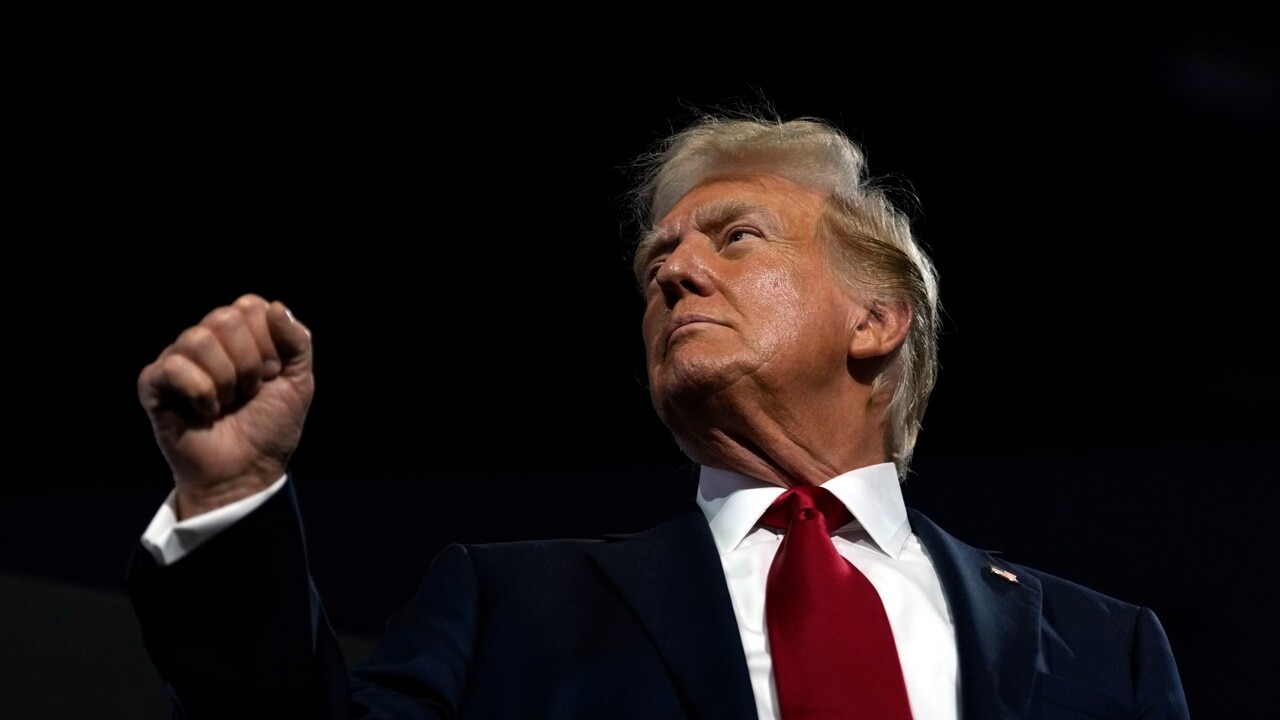
In 2020, Biden won 90 per cent of the Black vote while Trump received only 9 per cent but recent polls showed Harris only had about 84 per cent of the black vote.
In a neck-and-neck election such figures could make a difference, which is why the Democrats called in Barack Obama recently to castigate his black “brothers” for finding “all kinds of excuses” not to support a female candidate.
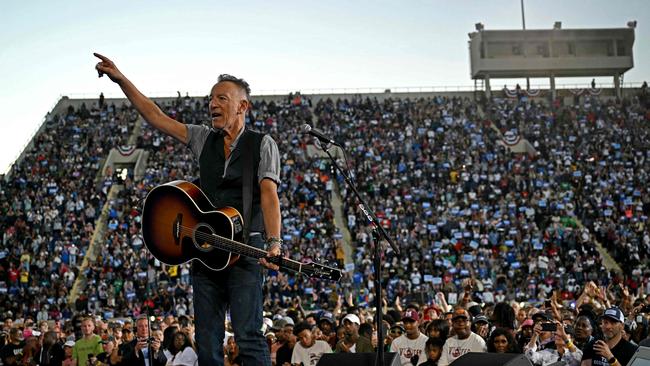
Harris has responded to the polls by recently releasing a raft of policies described as an “opportunity agenda for black men” in an attempt to claw back their vote.
Trump is also receiving a greater share of support from Hispanics, especially young men without a college education, eroding this once powerful pro-Democrat bloc.
Hispanics backed Clinton over Trump by 39 points in 2016, but in 2020 with Biden this fell to 26 points and in recent polls Harris has only a 19-point advantage.
Trump’s incremental but important gains among blacks and Hispanics are largely the result of greater support from men across the board, especially younger men. This is part of a broader and growing gender divide that has seen Trump’s five-point advantage among men widen to double figures since 2020, cutting across racial, educational and economic groups.
Conversely, women have increasingly flocked to Harris for a range of reasons including character, democracy and especially abortion rights.
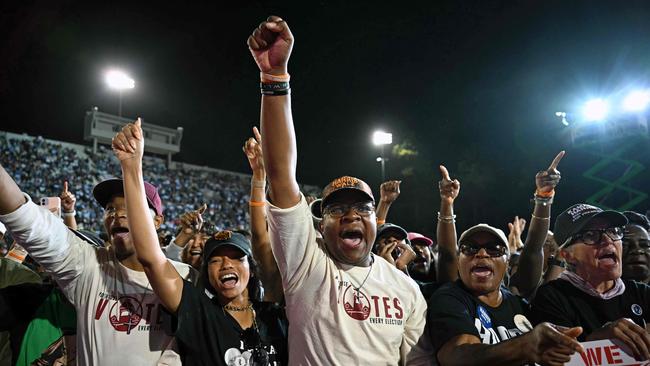
Abortion divide
Harris has made abortion rights a central plank of her campaign to try to exploit Republicans on the issue after conservatives made the political mistake of adopting positions on abortion which are to the right of mainstream America.
An AP survey this month shows Harris leading Trump on the issue of abortion by a massive 23 points, the largest of any issue between the candidates.
With polls showing that the issue is hurting the Republicans, Harris now uses her rallies to play clips of Trump bragging about his role in creating the conservative-majority Supreme Court, which struck down Roe v Wade.
Trump knows abortion is hurting him and he has flip-flopped on the issue, making contradictory statements about his position. He said earlier this month: “I think I do very well with women … you have one issue, you have the issue of abortion. Without abortion, the women love me.”

Suburban women are looming as a key demographic for both parties, just as they did in 2016 and 2020. Harris this week made a pitch to moderate Republican women in well-to-do suburbs of Philadelphia and Detroit in the key battleground states of Pennsylvania and Michigan.
She travelled with former Republican congresswoman and now anti-Trump campaigner Liz Cheney to target those Republicans, especially women, who are wary of voting for Harris but who do not like Trump. Some of these voters are among the 18 per cent of Republicans who voted for Trump’s primary Republican rival, Nikki Haley, and Harris is investing heavily in trying to win over this group.
But the pool of undecided voters is vanishingly small for both Harris and Trump. An analysis of polling by The New York Times and Siena College found that only 3.7 per cent, or about 1.2 million voters in the battleground states are still truly undecided. Trump meanwhile, is focusing his campaign heavily on the two issues on which he has a solid advantage: border security and the economy.
Immigration trump
Trump uses every rally and every outing to remind voters of the record levels of undocumented migrants who flooded into the US during the first three years of the Biden-Harris administration.
His argument is that Harris is by instinct soft on illegal immigrants and soft on border security and he says her recent move to the centre on the issue is a fake position which would quickly melt away if she were elected.
Harris has dodged questions about the border failures of the past three years, but has regained some traction on the issue adopting a much tougher position on border security and by highlighting Trump’s role in vetoing a bipartisan border bill earlier this year that would have introduced tougher restrictions on the border.
“He prefers to run on a problem instead of fixing a problem,” Harris says.
But polls say the issue continues to be a loser for her and it is likely to hurt her on November 5.
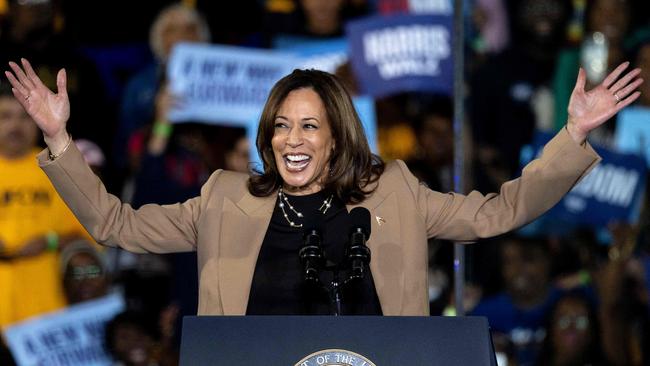
Economy the key
The economy remains the biggest issue with voters.
Although the US economy is now robust again with moderate inflation, low unemployment and strong jobs and wages growth, many voters have not forgiven the Biden-Harris administration for the high prices and high interest rates of their first three years in office. The lesson of governments around the world is that voters punish them for inflation. But with US inflation back at just 2.44 per cent, the question is to what degree voters will seek to punish Harris for previous price rises.
There are just seven states that will decide this election, but by far the most critical is Pennsylvania with its 19 electoral votes, which is why both Trump and Harris have held more campaign events there than anywhere else.
Harris’s most likely path to victory would be through winning the “Blue Wall” states, as Biden did in 2020. But if she loses one of Pennsylvania, Michigan or Wisconsin, she would have to win in at least one of the Sun Belt battlegrounds of Arizona, Nevada, Georgia and North Carolina.
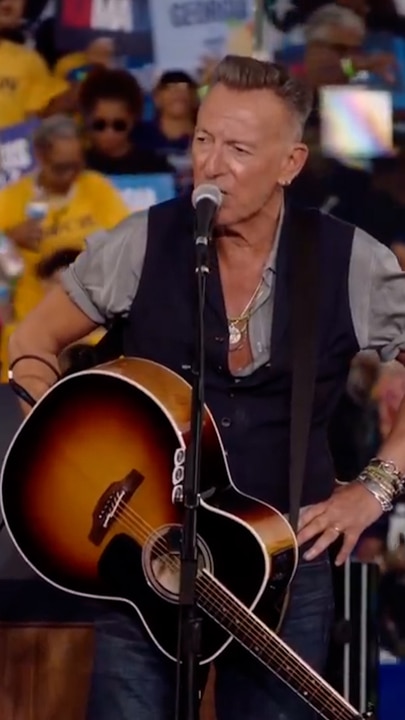
In such a close race, the result could come down to which party can mobilise more supporters to vote. The Harris camp is especially targeting young Democrat voters who might not have voted for Biden but who might vote for her as the candidate for generational change.
Some 20 million voters have already cast their ballots in early voting including many Republicans who have ignored Trump’s previous reluctance to embrace the idea of early voting
Final sprint home
Trump is showing no signs of changing his attention-grabbing style. Whether it is serving fries at McDonald’s or making quips about the size of late golfer Arnold Palmer’s genitalia, he is setting the agenda in a way that suits him.
Harris is trying to regain the momentum she enjoyed in her prolonged honeymoon after becoming the candidate. But nothing she has done recently – from her successful debate against Trump to her combative Fox interview – has led to any noticeable change to her polling. Her campaign is now moving to step up its attacks on Trump, spotlighting warnings about him from former Trump administration officials and showing videos of his more extreme comments at Harris campaign rallies.
But in the final days of this campaign, the risks are arguably greater for Harris than they are for Trump. Trump is well known to all Americans and their views of him are largely cemented one way or the other which is why even his stumbles do not seem to hurt him. But Harris is far less known and her candidacy is still a work in progress in the minds of many Americans. Her upward support seems to have stalled at its current level so there is a downside risk for her if she stumbles in the final days. But as it currently stands, this will be a contest for the ages and anyone can win.




To join the conversation, please log in. Don't have an account? Register
Join the conversation, you are commenting as Logout